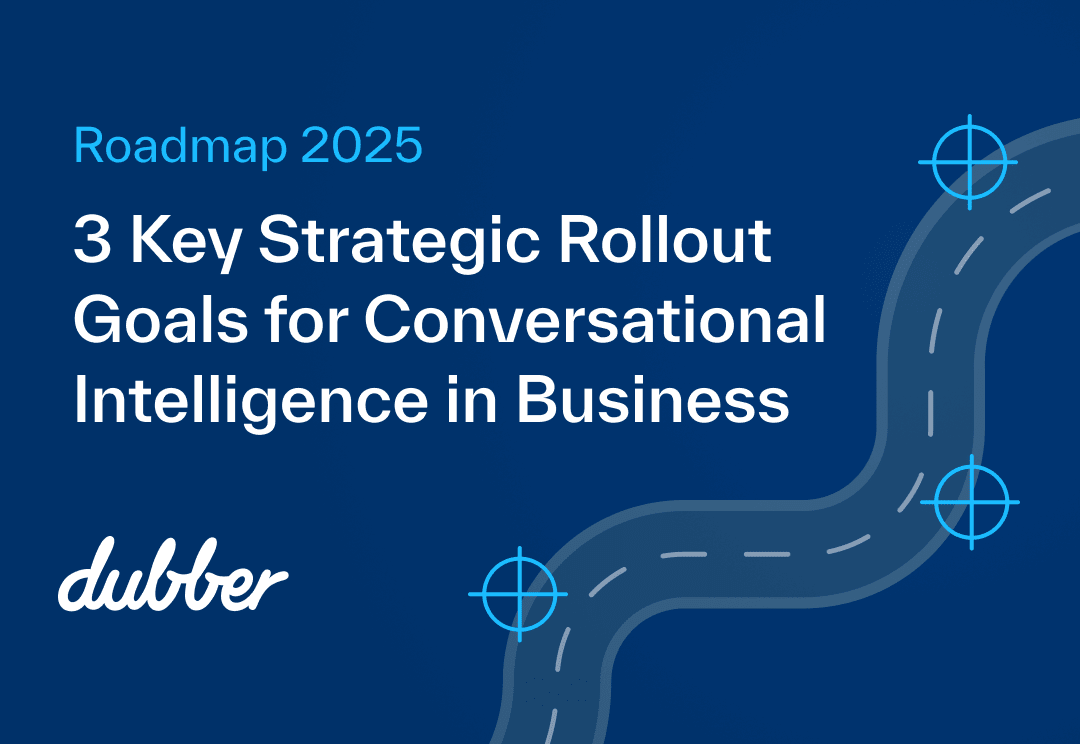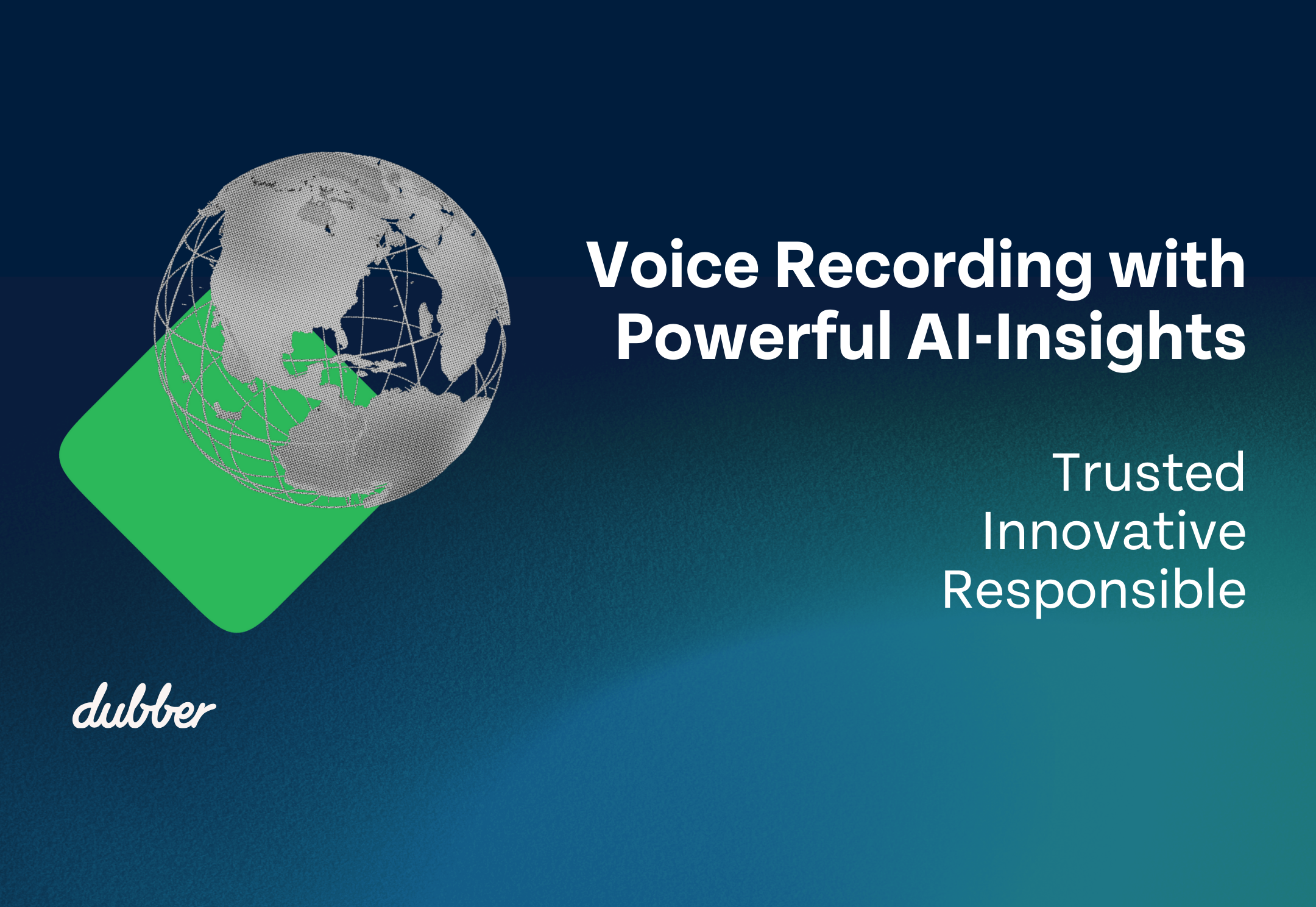

Roadmap 2025: 3 Key Strategic Rollout Goals for Conversational Intelligence in Business
“By 2025, 75% of conversations at work will be recorded and analyzed, enabling the discovery of added organizational value or risk.”
Gartner’s prediction, one we quote often, comes from the Top 10 Strategic Predictions for 2021 and Beyond: Resetting Everything. The paper is one that clever CIOs use to help shape their company’s strategic plans, capturing trending societal, business, and technological changes to ensure successful business advantage going forward.
So what does this mean for business and government over the coming years?
Conversational Intelligence is a powerful tool, but one that needs strategic direction to have the most significant impact on business.
Map timelines for successful business outcomes with these three key goals.
1. Meet compliance mandates and decrease risk
“In 2020, penalties have totalled $10.6 billion for non-compliance with Anti-Money Laundering (AML), Know your Customer (KYC), data privacy and MiFID (Markets in Financial Instruments Directive) regulations.” – Up Close and Personal; The Year of Personal Accountability, Fenergo
Hitting compliance mandates is the lowest-hanging fruit for strategic planning in Conversational Intelligence today. It is possible to satisfy compliance mandates and legislation in voice conversations within company, industry, affiliative, and regional requirements today with Conversational Intelligence.
With growing business data and information security overheads and reporting mandates across all sectors, business voice conversations also need capturing to ensure compliance. Unified Conversational Intelligence is the only solution.
To do this effectively, companies must ensure:
- The unified conversational intelligence solution records all relevant in-person and remote voice conversations – it needs to do so with appropriate controls in place and without ties to specific applications, rather as a service
- Recordings, transcriptions, and conversational data and metadata sets are stored in accordance with relevant data security requirements and timelines
- Conversational Intelligence data is quickly searchable, replayable and reportable
- A unified conversational data set is secured, protected and managed to the same standard as all datasets
Phase two of creating business outcomes – whether for compliance, revenue, people or customer intelligence – is to present multi-dimensional insights such as instant notification of breaches or risky activities, flagging keywords (e.g. ‘offshore’, ‘cancel’, ‘unhappy’) or behaviours (e.g. angry customer).
2. Conversational Intelligence value streams aligned to business strategy are identified and actioned
“It’s the opportunity to take your existing product line and market it better, develop it better, use it to improve customer service, or to get a 360-degree understanding of your customer. Data Strategy is driven by your organization’s overall Business Strategy and business model.” – Data Management vs. Data Strategy: A Framework for Business Success, Donna Burbank, Managing Director at Global Data Strategy
The problem facing leaders is that the applications of Conversational Intelligence in business are near-endless. Aligning your Conversational Intelligence focus with key areas already outlined in your strategic plan (or digital transformation strategy) is where you gain the most value from this technology. The same goes for any data-generating activities.
Here are two areas of business improvement identified in a strategic plan and how Conversational Intelligence can help.
Increase productivity in sales revenue
Conversational Intelligence can sit in on sales with every call, every meeting, every ‘coffee catch up.’ From these conversations, it’s easy to identify the tactics, scripts, keywords and emotional indicators that help close sales with customers – and re-train employees to follow successful strategies.
Improve customer experience
If your goal is to increase customer lifetime value via loyalty born of great CX, you need insights on your customer interactions. Rather than ‘How’d we do’ emails, you can automatically analyse all customer interactions (for both customer and employee) to identify where improvements can be made. This could identify key pain points in business for customers and how to solve them, when employees need to be coached due to their manner, or which topics are taking up considerable amounts of time and how to rectify that.
3. From data insights to Intelligent Automation
“While there is investment in IA broadly, only 10 percent of respondents are integrating solutions across its various dimensions: automation, artificial intelligence and smart analytics. While initial fragmentation of efforts is not to be unexpected, organizations need to move quickly to understand how, when and where to integrate efforts across technologies to fully optimize their potential.” – Easing pressure points: The state of intelligent automation, KPMG
Automation should be deployed throughout the business for operational efficiencies – and Conversational Intelligence is a tool that can be used to identify where automation opportunities lie.
For instance:
- Repeated keywords across a wide customer base can identify areas for switching over to web-based self-service to free up operator time
- Action items mentioned in video meetings automatically create and assign tasks in project management systems
- Competitor and product mentions can trigger on-the-fly competitive product analysis reports to display on screen for employees to speak to during the conversation
Creating intelligent automation throughout the business based on data requires significant thought and ongoing investment, but simply can’t be ignored – it’s time to action.
Let’s talk
Conversational Intelligence is available now with Dubber – a cloud-native, compliant, fully scalable solution available across all your usual communication channels. We go beyond basic voice recording and transcriptions to an enriched dataset of words, speakers, emotions, languages, and themes. With these meaning-enriched datasets, you can create and trigger real-time automated actions and workflows. Start planning your roadmap to doing more with your business data with Conversational Intelligence & Dubber.
Let’s chat.

